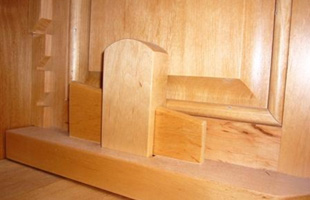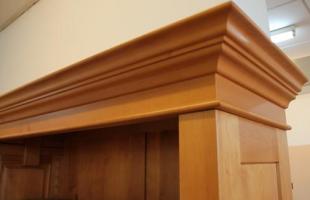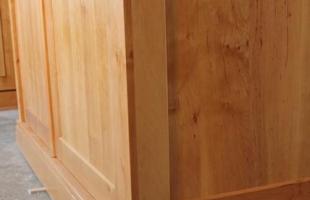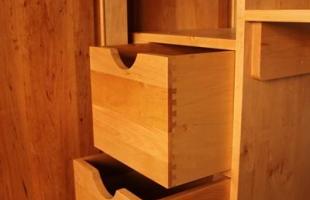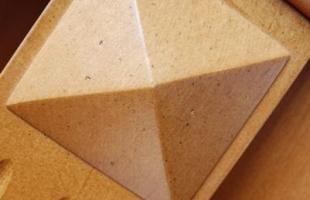Shelves
Since time immemorial, wood has satisfied many human needs. Both its widespread availability and ease of processing meant that it was already used by early man to make simple tools and weapons, and in slightly later times to make household appliances and to build castles and fortifications. With the development of civilisation, the variety of wood products increased and the methods of their production were improved and refined, causing a constant increase in the consumption of wood. Economical use of wood requires good knowledge of modern ways of manufacturing products from this valuable raw material.
Thanks to its properties, it allows the production of furniture of various shapes and cuts. It is an absolutely ecological material, friendly to humans and the environment. Unique effects are obtained by coating the furniture with special ecological waxes. The original drawing of the wood gives them individual features which create a unique effect.
Furniture is traditionally manufactured on a small scale in favour of products with a special structure of connections, but more functional than many years ago.
Wedge joints are the part of a construction where two or more pieces are joined together. The wedges are carefully fitted into holes made in the timber elements to be joined. They allow easy and quick assembly and disassembly of furniture. Wedge joints are only used to join carcass walls – rims to sides.
Each furniture product is a spatial structure composed of elements. Furniture products are composed of various elements of different shapes and cross-sections. These are elements with small cross-sections in relation to length and panel elements with length and width many times greater than the thickness.
Attention must be paid to the execution of trapezoidal keyway joints in the drawer.
We produce old-fashioned typical carpenter drawers. Walls are made of boards, bottom – of plywood. Drawer elements made of boards are connected by means of an angle joint.
Thanks to its properties, it allows the production of furniture of various shapes and cuts. It is an absolutely ecological material, friendly to humans and the environment. Unique effects are obtained by coating the furniture with special ecological waxes. The original drawing of the wood gives them individual features which create a unique effect.
Furniture is traditionally manufactured on a small scale in favour of products with a special structure of connections, but more functional than many years ago.
Wedge joints are the part of a construction where two or more pieces are joined together. The wedges are carefully fitted into holes made in the timber elements to be joined. They allow easy and quick assembly and disassembly of furniture. Wedge joints are only used to join carcass walls – rims to sides.
Each furniture product is a spatial structure composed of elements. Furniture products are composed of various elements of different shapes and cross-sections. These are elements with small cross-sections in relation to length and panel elements with length and width many times greater than the thickness.
Attention must be paid to the execution of trapezoidal keyway joints in the drawer.
We produce old-fashioned typical carpenter drawers. Walls are made of boards, bottom – of plywood. Drawer elements made of boards are connected by means of an angle joint.
